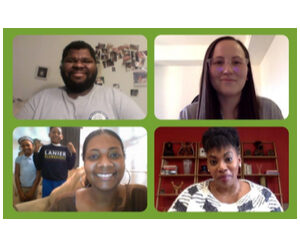How to Talk with your Child’s Teacher (Also available in Spanish)

Here are some tips from the Colorin Colorado bilingual website to develop a strong partnership with your child’s teachers.
When should I talk with my child’s teacher?
- Early and often. Contact your child’s teacher or teachers at the beginning of the year or as soon as you can. Get acquainted and show your interest. During the school year, keep in touch with your child’s teachers. This will help you strengthen the parent-teacher partnership, and will be an important part of the child’s success in school. When a child sees that parents and teachers are working together, the child will understand that his/her education is a top priority at school and at home. Many schools use special Apps for families to communicate with the teachers, such as Remind, or Class Dojo. Visit the school’s website to look for teacher contact information, or ask someone at the school for more information about how families tend to communicate back and forth regularly with teachers and other staff. Joining a parent/caregiver group at the school is another good way to stay in the loop about what is going on at the school and to meet other students’ families who you can share information back and forth with throughout the school year.
What else can I do to help my child’s teacher?
- Tell teachers what they need to know about your child. You have important knowledge about your child’s likes, dislikes, needs, and problems. It may be your son learns better when he sits close to the teacher. Maybe there was a death in the family and your child is having trouble concentrating. Letting the teacher know these things will help your child at school. If she has special needs, make these known from the beginning. If you notice a big change in your child’s behavior, school performance or attitude during the school year, contact the teacher immediately.
- Email the teacher if your child does not understand an assignment or if they need extra help to complete an assignment. Using e-mail will allow you to send and receive messages at times that are most convenient for you. However, make sure you figure out a communication strategy that works for both you and the teacher. If your child is in middle or high school, it might work better for you to make a plan with your child at home for how they will ask their teacher for more support or time to complete an assignment the next day in school.
- Stay informed during the year. Parent-teacher conferences and report cards offer some indications of how well your child is doing in school. But you also need to know how things are going between these updates. For example, if your child is having trouble in math, contact the teacher to find out when they have their next math test and when it will be returned to them. This allows you to address a problem before it turns into something bigger.
And here are more tips and resources from our Center.
I think my child needs more support in the classroom. How do I talk with their teacher?
- Parents and caregivers have an important role in the process of deciding what added supports their child will receive in school, if needed. Did you know that your child can be gifted and receiving special education services at the same time? Special Education services are used either temporarily of permanently to make sure your child keeps thriving in school. So, keep your expectations high, listen to the teachers, and make sure your ideas are heard! Read more about your role and your rights on the Ohio Department of Education website (available in 21 languages), or call the Ohio Coalition for the Education of Children with Disabilities to talk to someone in English or Spanish. Whether your child has a specific need (like sitting closer to the front of the classroom) or you think they need some extra support for a short time in a specific skill area, it is critical to talk with your child’s teachers about your concerns. If you feel like your concerns are not being taken seriously, make sure to write them down for the school (put a date on the paper or email it) and keep a copy for yourself.
I am new to the United States and I don’t understand how to work with my child’s school. Where can I go for more information?
- Families and schools communicate very often in the U.S. education system. There are papers that need to be signed, homework that is done out of school time, and many schools have events for families or phone calls and letters for families to answer. The Colorin Colorado website has great information about how U.S. schools interact with families.
- Immigrants without documents have specific protections in the U.S. education system, which you can read a summary of here, or on the U.S. Department of Education website. For example, public schools may not stop a student from enrolling in school based on their immigration status. They may not require students or parents to share their immigration status. They may not ask students or parents questions that would reveal their status. They may not require social security numbers from all students. Adults without social security numbers who are applying for a free lunch and/or breakfast program on behalf of a student can write on the application that they do not have a social security number.
My child is getting older and it seems like I’m not as big of a part of their education. How do I support my child in middle and high school?
- It looks and feels different, but your parenting role is JUST as important in middle and high school! Researchers have looked at the most effective ways that families support their children in middle and high school. Check out our 1 page of tips for middle school families, career conversation ideas, or read about the 5 essential high school student family supports here.
References
Adapted from Helping Your Child Succeed in School. U.S. Department of Education. First published in June 1993. Revised 2002 and 2005.
Please share:




